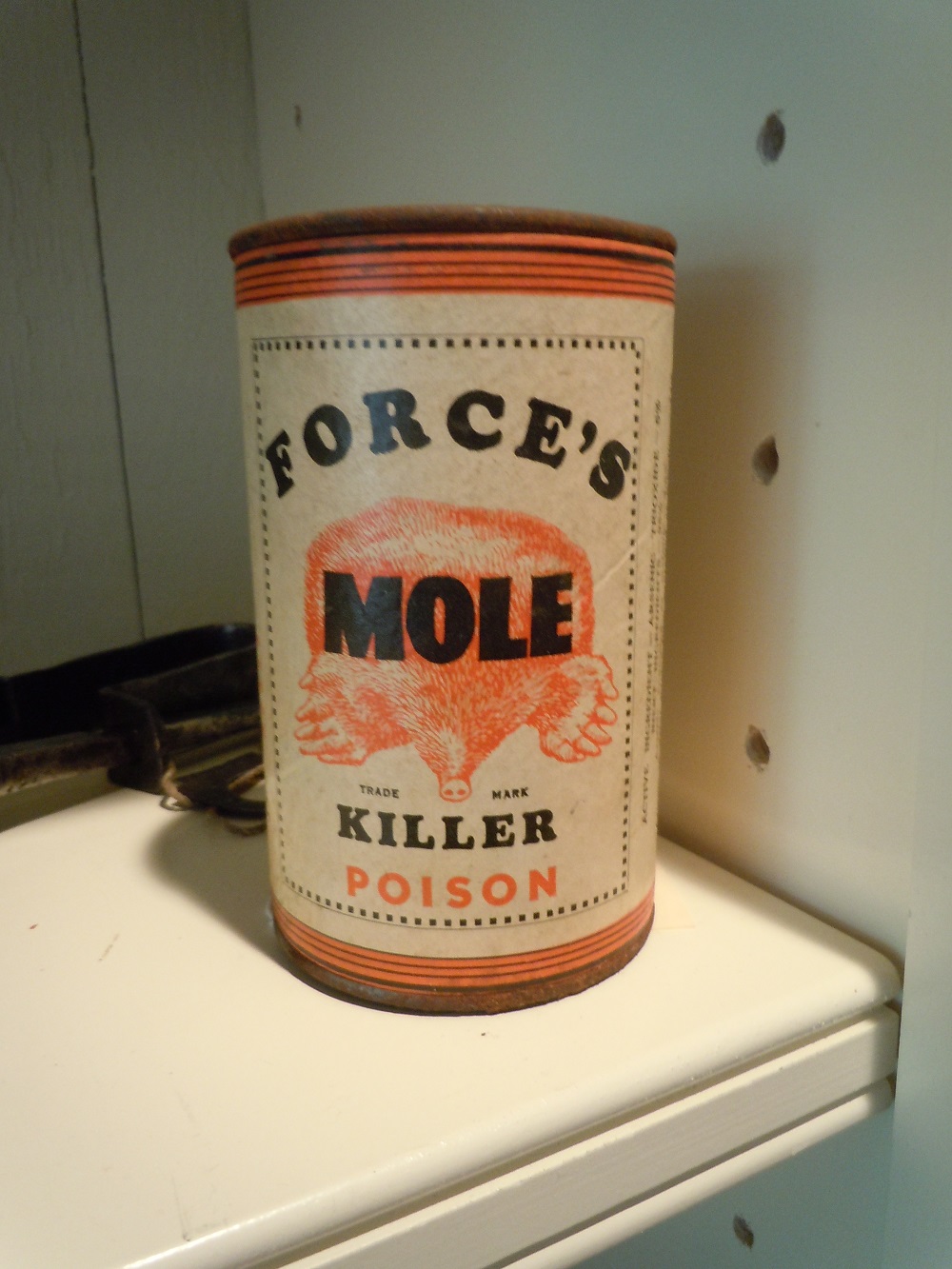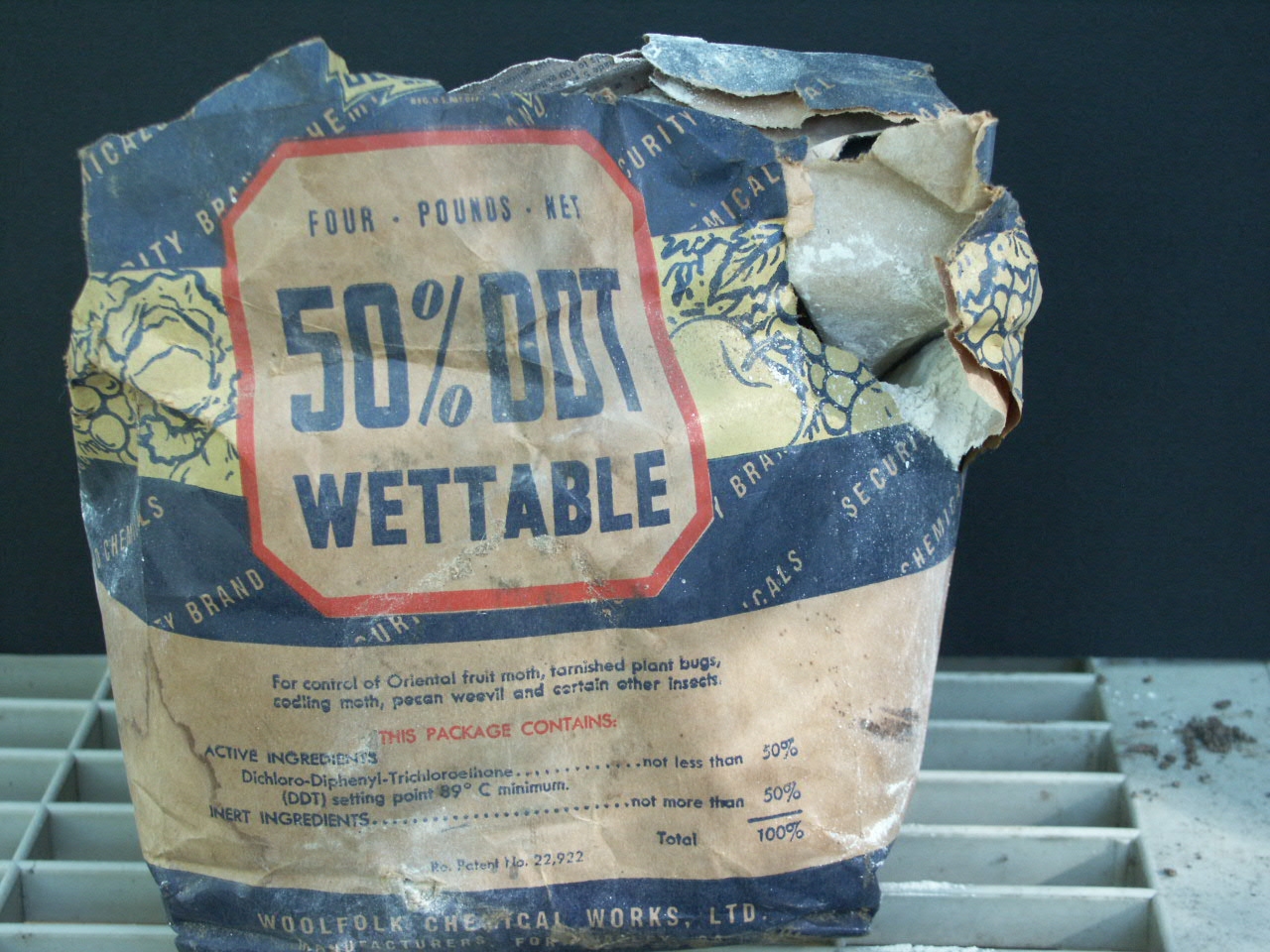Pesticides – Disposing

When my father died a few years ago our family faced a situation familiar to many: disposing of his pesticides. In his sixty-five years of small-time farming he had accumulated multiple sprays for his orchard, dusts for the cows and weed killers for the pasture. What were we to do with the poisons?
In our case, since all of the dust and granule containers were less than two pounds each and the liquid concentrates were less than one gallon each, we could dispose of the pesticides in the garbage. The Georgia Environmental Protection Division allows disposal of small quantities of pesticides in any sanitary landfill, as long as they are properly prepared.
The preparation is straightforward. Triple-bag dry pesticides or fertilizers in heavy duty plastic garbage bags. Solidify liquid pesticides or fertilizers by pouring them into a sealable container of kitty litter. Wrap empty glass containers with several layers of newspaper before triple-bagging. ALWAYS wear gloves, a long-sleeved shirt and eye protection when disposing of pesticides.
Another way to dispose of pesticides is simply to use them on the site mentioned on the label. Even though the pests may be gone you can legally use a poison in the area where they used to appear. This is a good technique to use up a last bit of weed killer at the end of the summer. Simply spray it on your lawn at the recommended rate.
Sometimes pesticides deteriorate in storage. Heat, cold and light may cause a chemical to change or to become ineffective. In our case, we found a two gallon container of Roundup(tm) in the farm shed. Since I wage constant battle against English ivy and poison ivy, I tested the chemical on a patch of weeds to be sure it was effective (it was) before putting it in my shed for further use.
STORAGE My dad was rather haphazard in his storage. We found bags of cattle dust stuffed in old chicken nests and a bottle of peach spray in the garage. An odd smell in the old, empty house was traced to a long-forgotten box of apple insecticide. You might not have large quantities like he did but ALL pesticides should be stored correctly.
The best place for poisons is in a locked cabinet. One of my colleagues replaced the door latch on a small refrigerator with a lock and hasp. He keeps his chemicals secure and also protects them in the insulated refrigerator from swings in temperature.
If you can’t locate a lockable container, buy a large plastic tub having a tightly fitting lid. Place the tub on a shelf above the reach of children. Liquid chemicals in particular should always be stored in a liquid-proof container, in case they leak. Of course, NEVER store pesticides out of their original container – especially not in food or drink containers.
WARNING LABELS This seems like a good time to mention that “the label is the law” when using pesticides. All containers are required to display a signal word like Danger (highly toxic), Warning (moderately toxic) or Caution (slightly toxic) Always read the label to determine if protective clothing should be worn or other precautions taken.
Although you might be tempted to believe that “If one tablespoon is recommended, two tablespoons will kill bugs that much faster!” this is generally not true. It is illegal to dilute more than the labeled amount of pesticide or to use it in a manner inconsistent with the label.
Never use a pesticide that has lost its label. Even though you think you remember what’s inside, most manufacturers use similar containers for all of their products. It is no fun discovering that you sprayed weed killer on your tomatoes, thinking that you were combating early blight. Use a rubber band to keep the ever-present but poorly-behaved accordion labels folded in place on bottled products.
Dozens of people are injured each year from accidental pesticide exposure. If you store your chemicals properly and dispose of them correctly you won’t run the risk of adding to the statistics.

















